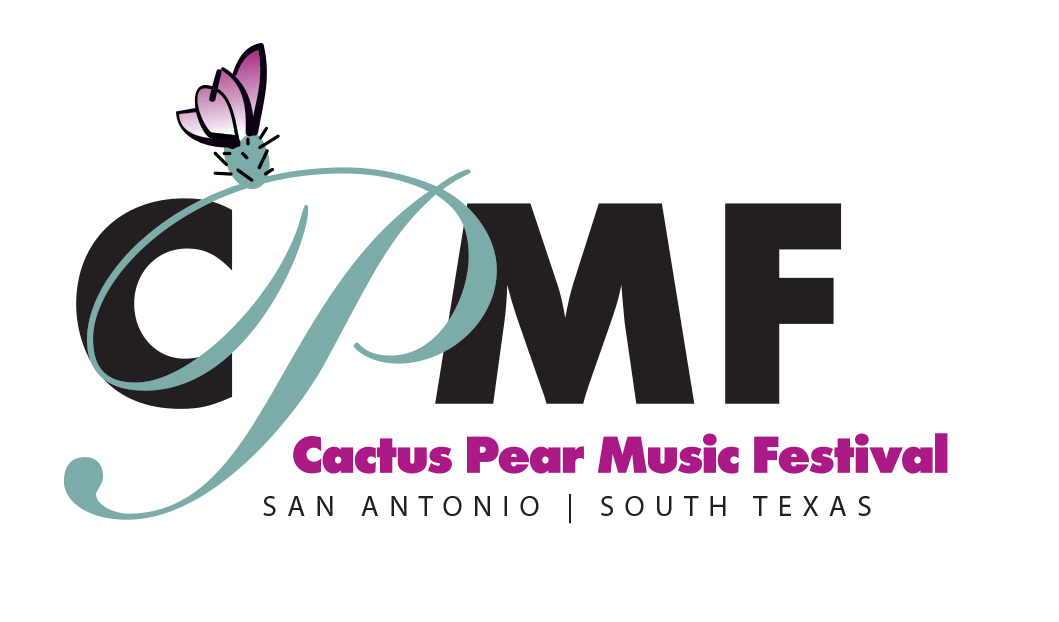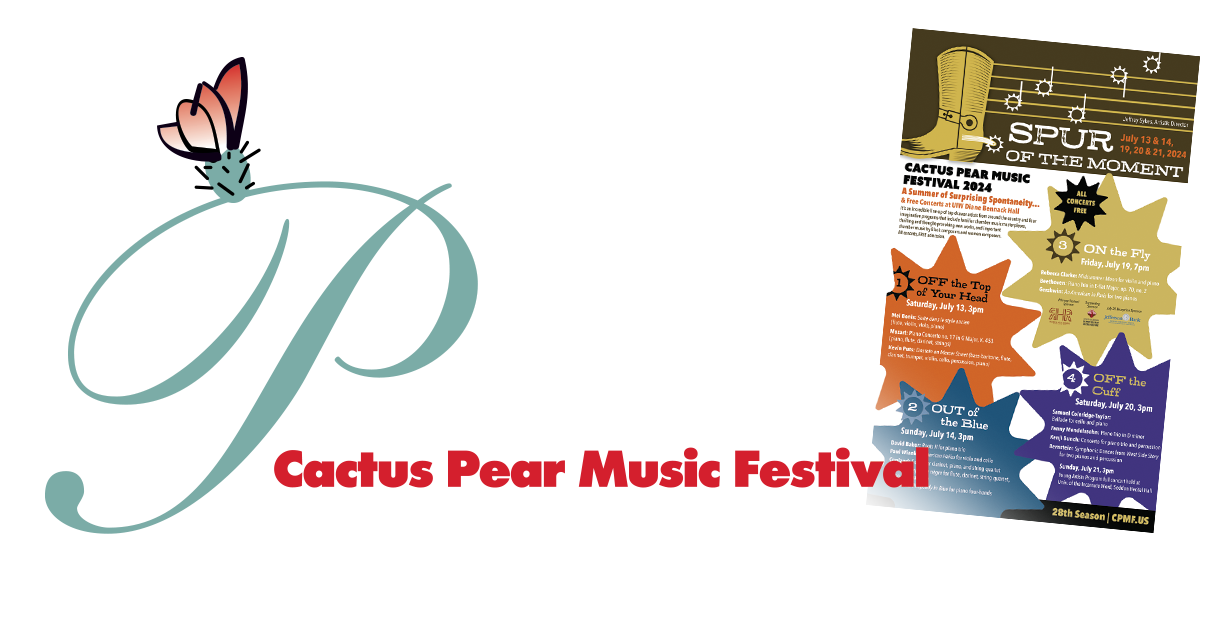Season 27
Program 3 Notes
3.
Breaking the Mold
Friday July 14, 2023
Trinity Baptist Church – 7 pm
Alfred Schnittke (1934-1998)
•
Moz-Art for two violins (1976)
— Sant’Ambrogio, dePasquale
Frank Bridge (1879-1941) • Lament, H. 101, for two violas (1912)
— Bryla, Cook
Wolfgang Amadeus Mozart (1756-1791) • Piano Concerto no. 12 in A Major, K. 414 (1782)
Allegro • Andante • Rondeau: Allegretto
— Sykes, Sant’Ambrogio, dePasquale, Bryla, Rapier
Jessie Montgomery (b. 1981) • Peace for viola and piano (2020)
— Cook, Sykes
Dmitri Shostakovich (1906-1975) • Piano Quintet in G minor, op. 57 (1940)
Prelude: Lento • Fugue: Adagio • Scherzo: Allegretto • Intermezzo: Lento • Finale: Allegretto
— Sant’Ambrogio, dePasquale, Bryla, Ross, Sykes
For a printable PDF of ALL program notes & song text/translations, click here.
Sometimes composers need to break with traditions of the past. Schnittke refused to compose in a single style—he wanted polystylism. Bridge refused to treat the viola as a second-class instrument. Mozart reimagined a concerto being played with a string quartet rather than an orchestra. And Shostakovich took a quintessentially romantic form, the piano quintet, and filled it with Baroque-inspired music. We all need to break the mold now and again.
— all program notes by Jeffrey Sykes, DM
Alfred Schnittke (1934-1998)
Moz-Art for two violins (1977)
Composer Alfred Schnittke was born in the Soviet Union but first studied music in Vienna where he was steeped in the Austro-Germanic tradition. That tradition, particularly in the mid-20th century, was one of experimentation and the pushing of boundaries, and Schnittke was eager to try his hand at this. Unfortunately for him, arts in the Soviet Union were under strict state control; experimentation was greatly discouraged, and could even be dangerous, as happened with Shostakovich. Much of Schnittke’s music was banned at home, but he was able to support himself by writing 60 film scores over 25 years. In writing film scores, Schnittke came to see the value of using different styles from different sources for different parts of a composition—a technique he called “polystylism.” He wrote an important essay on the topic, “Polystylistic Tendencies in Modern Music,” and that essay, together with his music, proved to be extremely influential.
Moz-Art, written in 1977, is a quirky and humorous example of Schnittke’s polystylism. It is primarily based on Mozart’s unfinished “Music for a Carnival Pantomime,” but it includes snippets of several other well-known compositions of Mozart. The musicologist David Fanning wrote that “Schnittke often treats Mozart with the detached bemusement of a visitor from outer space confronting an artifact from a dead civilization.”
Frank Bridge (1879-1941)
Lament for two violas (1912)
British composer Frank Bridge initially trained at the Royal College of Music as a violinist, but soon switched to studying viola and composition, following in the footsteps of dozens of violist-composers like Bach, Mozart, and Beethoven. He studied composition with Charles Viliers Stanford and viola with Lionel Tertis, at the time the world’s leading violist and viola teacher.
Tertis was always encouraging his friends and students to write new works for the viola. Bridge wrote the Lament for two violas in 1912 to perform with Tertis in London’s Wigmore Hall. The duet was never published and the manuscript was lost, but a pencil sketch of the work survived in the library of the Royal College. Bridge was able to reconstruct the work from the sketch, and he later performed it with another great violist-composer, Paul Hindemith.
The Lament is a deeply moving, romantic work; the two instruments spin a haunting dialogue that becomes more and more animated, then subsides into stillness.
Wolfgang Amadeus Mozart (1756-1791)
Piano Concerto no. 12 in A Major, K. 414 (1782)
Wolfgang Amadeus Mozart wrote his Piano Concerto no. 12 in A Major, K. 414, in Vienna in late 1782 for the winter concert season. It is one of three concertos that Mozart offered on subscription to the public, writing that they “may be performed not only with an accompaniment of large orchestra and winds, but also a quattro, namely, with two violins, viola and violoncello.” It is in Mozart’s quartet version that we’ll hear the work today.
The concerto opens with a lively and spirited Allegro that immediately draws the listener into the playful and energetic character of the piece. Mozart's brilliant writing for the piano shines through in this movement, with virtuosic passages and cascading scales that demonstrate both technical skill and expressive depth. The quartet provides a colorful backdrop, creating a sense of joyful musical conversation.
The second movement offers a serene and introspective contrast to the exuberance of the first movement. Here, Mozart presents a tender melody that is carried by the piano, accompanied by delicate and sensitive writing for the quartet. The interaction between the soloist and the quartet in this movement is marked by a sense of intimacy and emotional depth, creating an introspective atmosphere.
The concerto concludes with a lively and spirited Rondo movement, full of Mozart's signature wit and charm, as the piano engages in a playful and virtuosic dialogue with the quartet.
Mozart thought very highly of this work and its two companions. In December 1782 he wrote to his father, “These concertos are a happy medium between too heavy and too light. They are very brilliant, pleasing to the ear, and natural, without being insipid. There are parts here and there from which connoisseurs alone can derive satisfaction, but these passages are written in such a way that the less learned cannot fail to be pleased, albeit without knowing why.” This letter perfectly sums up Mozart’s philosophy of composition: create music that has extraordinary depths that is nonetheless immediately engaging to all listeners. He succeeded brilliantly in this concerto.
Dmitry Shostakovich (1906-1975)
Piano Quintet in G minor, op. 57 (1940)
Dmitry Shostakovich lived with the political odds stacked against him. As one of the leading cultural figures of Stalinist Russia, Shostakovich was under constant, intense scrutiny. The success of his first symphony had catapulted him to international fame—and to the attention of the authorities. His great opera, Lady Macbeth of Mtsensk District, premiered simultaneously in Leningrad and Moscow in 1934. It was a resounding popular and critical success, with over 177 performances at near-capacity attendance at the two venues over two years. Productions were mounted in the provinces and abroad. Shostakovich was thrust to the cutting edge of Soviet music. All of this came tumbling down on January 28, 1936: Stalin had just seen a performance of Lady Macbeth, and he was not pleased with what he saw and heard. An article appeared in Pravda (believed to be by Stalin himself) entitled “Muddle instead of music.” It castigated Shostakovich for “leftist confusion instead of natural human music” and warned him plainly of the consequences should he continue down this path. Shostakovich was immediately toppled from his position as the leading Soviet composer. He wrote his immensely popular Fifth Symphony (1937) as “the creative reply of a Soviet artist to justified criticism” and redeemed himself with the authorities, at least temporarily.
It was at this time that the politically-redeemed Shostakovich was approached by the Beethoven String Quartet to write a new piece for them. He responded immediately that he would write a piano quintet to perform together with the quartet. He began work on the Piano Quintet in G minor, op. 57, in the summer of 1940 and premiered it to great acclaim with the quartet on November 23 of that year. Although there are moments of great pathos in the work, overall the piano quintet is one of the most optimistic pieces Shostakovich wrote, displaying little of the intense soul-searching of much of his other music.
Shostakovich revered the music of Johann Sebastian Bach and played many of his keyboard works. Later in his life, he would go so far as to write a set of twenty-four preludes and fugues, his answer to Bach’s Well-Tempered Clavier. The spirit of Bach is clearly felt throughout the piano quintet. It opens with a prelude-and-fugue pair, the prelude dramatic and forceful, the fugue contemplative. This is followed by a sassy and sarcastic Scherzo that makes much out of very simple materials. The Intermezzo has a texture quite reminiscent of a Baroque trio sonata complete with long-spun melodies and walking bass. And the Finale is an upbeat combination dance and march, and even includes a snippet of a tune that was commonly used for clowns in Russian circuses.
Political interference continued to blight Shostakovich’s career throughout his lifetime, despite the outward signs of official favor and recognition that increasingly came his way. And yet, according to musicologist David Fanning,“amid the conflicting pressures of official requirements, the mass suffering of his fellow countrymen, and his personal ideals of humanitarianism and public service, he succeeded in forging a musical language of colossal emotional power.”




